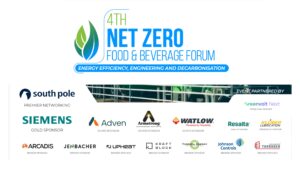We are in an era where environmental consciousness is integrating with business strategy. Furthermore, vertical integration has emerged as a great tool to revolutionize sustainability in supply chains. This is an approach that was once seen through the lens of economic efficiency but now is a catalyst of environmental stewardship. Moreover, it consolidates control over various stages of production and distribution. So, companies are not just able to streamline operations, they are making ecosystems where sustainability flourishes from source to consumer. In this article, we will go through the foundations of sustainable vertical integration, benefits, challenges, and more. So, let’s dive in.
Foundations of Sustainable Vertical Integration
Vertical integration displays the capability to help companies reimagine their entire production and distribution process. This is having supply chain sustainability at the core. Let’s see more ahead.
Ecosystem-wide Innovation
Vertical integrations through control of multiple stages of the supply chain allow businesses to execute cutting-edge technologies and processes. These can prove to be impractical or unachievable in the case of a fragmented system. Furthermore, it includes developing proprietary green technologies like bio-based materials. These can be seamlessly combined with various production stages. Moreover, the ability to experiment and innovate speeds up the development and adoption of sustainable practices.
Data-Driven Sustainability Metrics
Ownership of various stages of the supply chain provides access to a ton of data driving sustainability efforts. Furthermore, companies can execute comprehensive data collection systems. These can track the impacts on the environment at each stage. So, it covers everything from raw material sourcing to end-user consumption. Moreover, this granular data gives way for the development of sophisticated sustainability metrics and KPIs. So, these offer a true picture of the company’s environmental impact. Additionally, with this information, organizations can make data-driven decisions to optimize their efforts and quantify results.
Regulatory Compliance and Future-Proofing
Vertical integration positions organizations to navigate the complex area of environmental regulations effectively. Furthermore, businesses can ensure compliance with current regulations and prepare for future ones through great control over the supply chain. This proactive approach gives companies the area to implement measures that exceed the current needs. It also gives a competitive advantage as the regulations become more strict. Additionally, it leads to less reliance on external suppliers or partners to make changes. So, this is one of the topmost positive impacts of vertical integration strategies for sustainable supply chain management.
Environmental Benefits of Vertical Integration In Sustainable Supply Chains
The environmental advantages of vertical integration go far above traditional sustainability measures. It offers organizations a chance to fundamentally redesign their operations. So, let’s look at it in depth ahead:
Closed-Loop Material Flows
Vertical integration creates closed-loop systems where materials and resources are consistently cycled through the production phase. Furthermore, this approach reduces waste and the need for virgin materials. For instance, a vertically integrated textile company can collect and recycle used garments, process them back into fibers, and use them for new products. This level of circularity of materials is hard to achieve without full control over the various stages of the supply chain.
Ecosystem Services Integration
Companies possessing vertical integration can easily incorporate ecosystem services into their business. Furthermore, it can involve investing in and managing natural resources supporting the supply chains. It includes forests for sustainable timber or wetlands useful for water purification. Moreover, with the direct management of these ecosystems, companies can ensure long-term health and productivity while contributing to climate change mitigation.
Product Lifecycle Optimization
Vertical integration gives way to a holistic approach to product lifecycle management. Furthermore, companies can design products having end-of-life considerations. So, this can involve creating products that are easy to disassemble and recycle. It can also involve making take-back programs that ensure products are recycled and upcycled at the end of their life. Moreover, with the consideration of the entire lifecycle during the design phase, companies can reduce the environmental impact of their products.
Challenges and Considerations
Vertical integration gives major benefits when it comes to supply chain sustainability, However, it presents challenges as well. These need to be navigated carefully. In this section, we will look at some of those challenges and considerations for them:
Initial Investment and Risk
Vertical integration for sustainability shows the significant need for upfront investment. Furthermore, companies must allocate major resources to acquire or develop new stages of their supply chain. So, it requires large-scale infrastructure projects or acquisitions. As a result, this financial commitment comes along with inherent risks as success is not guaranteed. Firms should carefully assess the long-term environmental and economic benefits against the initial costs and risks. It will ensure that the integration aligns with supply chain sustainability goals and overall business strategy.
Complexity in Management
Vertical integration brings new layers of complexity to business operations. Furthermore, managing the various stages of production and distribution shows a need for broad expertise. It can also strain the existing structures of management. So, companies must develop new systems and processes to coordinate activities across different stages of the supply chain. This ensures that sustainability practices are applied consistently. This complexity needs immediate attention as it can lead to inefficiencies. So, this highlights the need for robust management systems and clear communication channels through the integrated supply chain.
Balancing Specialization and Innovation
Vertical integration brings great control over the whole supply chain, however, it can restrict access to external innovations and specialized expertise. Furthermore, by doing everything in-house, firms can miss out on cutting-edge supply chain sustainability solutions made by specialized suppliers. So, to mitigate this risk, vertically integrated companies should make a balance between internal control and external collaborations. It can include creating partnerships with sustainability-focused startups, attending industry consortiums, or maintaining flexible supply chain components.
To Sum Up
Vertical integration for supply chain sustainability is a powerful strategy for taking control over multiple stages of production. It can help with comprehensive sustainability measures, reductions in transportation emissions, minimize waste, and much more. However, the challenges need in-depth consideration for successful results.
One such way of mitigating all the challenges of supply chain sustainability is to attend the Net-Zero Supply Chain Summit in Amsterdam, Netherlands on September 12-13, 2024. This event is all set to bring industry leaders, innovators, policymakers, and more together to discuss cutting-edge strategies, case studies, technologies, and more. It will also provide incredible networking opportunities to stay ahead of the competition. So, don’t wait any further and register today!



